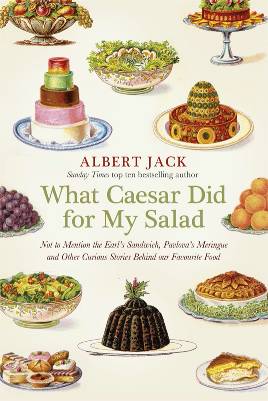
In medieval times, cooking was a big chore—for a lot of reasons, but mainly for one. People had no easy way to light fires.
They didn’t have matches, much less the self-igniting stoves or flamethrowers that are a part of every modern kitchen. Some people figured it was easier to just keep a fire burning constantly.
It took a little more effort to fetch the extra wood, but not as much effort as lighting the fire anew every meal with steel and flint.
Now that there was always a fire in the kitchen, it seemed natural to always leave the household pot of stew on top of it. They didn’t have any kind of refrigeration, so keeping the pot constantly simmering was a way to prevent the stew from going bad.
It’s a bit like a buffet keeping a warming plate all day, except it was a boiling plate, and they never dumped the dregs out and washed the pot out.
They kept the same stew brewing, month after month, topping it off with more water and tossing in more veggies but never starting from scratch.
This was called a perpetual stew, and you might have heard of the concept already, if you’ve read stories set in that period. Game of Thrones talked about it, and you’ll also see it in video games.
But you’d think that we wouldn’t have perpetual stews anymore, since “turn on the heat source” is now a trivially easy task.
And yet we’ve had these stews brewing even in modern times, thanks to tradition. Perpignan in France kept one going for 500 years, right into the 20th century, till the Nazis put an end to it. As recently as the 1980s, Normandy had one stew that had been going for 300 years.
Today? Individual people still keep their own ones for decades. Instead of boiling them continuously, it’s more normal to stick it in the fridge overnight, scrape off the smelly floating fat the next morning, and then heat it again.
In Bangkok, customers can’t get enough of the latter at Wattana Panich, a noodle soup joint in the trendy Ekkamai neighborhood, where third-generation owner Nattapong Kaweeantawong wants to clear up what he thinks is a popular misconception about his beef soup.
“Lots of people think we never clean the pot,” he says. “But we clean it every evening. We remove the soup from the pot, then keep a little bit simmering overnight.”
It’s that little bit, he says, that forms the stock of the next day’s soup. So, yes, at least a taste of what you put in your mouth is 45 years old and counting.
“Since my grandfather’s time, we’ve never really had a set recipe about how much of each ingredient to put in,” Nattapong says. “So the person making the soup will constantly have to taste it to know what needs to be added.”
He says some of the ingredients include nearly a dozen Chinese herbs, plus garlic, cinnamon, black pepper and cilantro root. And then there’s the beef. He goes through about 150 pounds a day.
“To make it tender, we cook the beef for around seven hours. We put the whole thing into the pot so it absorbs all the flavors,” he explains. “Then after three hours, we take it out and cut it into smaller pieces, then cook it for another four hours.”
The pot at Wattana Panich sits near the sidewalk along a busy street. The simple restaurant occupies two floors of a shophouse that the family bought decades ago. And a good thing too, Nattapong says.
They couldn’t afford to even rent here now. The pot itself draws crowds, in part because of its sheer size.
About 5 feet in diameter and 2 1/2-feet deep, it brims with chunks of beef bumping into one another as Nattapong or another member of his family constantly stirs the thick, dark brew.
“When I first started in the business, my dad would make the soup and the broth and I would taste it, to understand what the perfect taste is,” Nattapong says. “Nowadays, I can just look at it and know what’s missing.”
The result is an aromatic blend of spices, herbs and beef — one that has been drawing repeat business since his grandfather started making the soup at the original shop down by the Chao Phraya river more than 60 years ago.
“My earliest memory coming here, I was 5 or 6, maybe,” says 24-year-old Indi Rakamnuaykit. He says his father has been coming here since he was 11 years old.
“The prices were supergood. According to my dad, he’d say coming here with a large family would never break the bank. You would always come here because you expected top-quality food and homey service,” he says. “It’s just nice.”
Though other items are on the menu, he gets the beef noodle soup every time.
“You really taste the marrow and the fat,” he says. “That’s what makes the soup so good — the quality has never changed. And I’ve been coming here for a very long time.”
Albert Jack AUDIOBOOKS available for download here
More Food History with Albert Jack





































